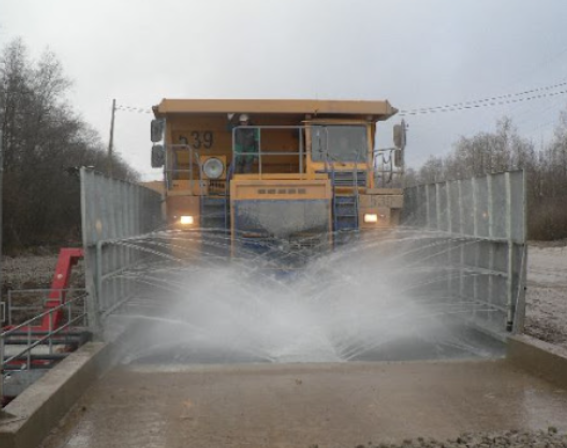
In today’s environmentally conscious world, tire wash systems have emerged as a critical component in managing site contamination and maintaining public roadway cleanliness. As businesses and municipalities aim to balance ecological responsibility with economic efficiency, understanding the economics of tire wash systems—including their cost and potential revenue streams—is essential. This article delves into the financial aspects of tire wash systems, exploring both initial investments and ongoing returns, and demonstrates why these systems are not just a regulatory compliance measure but a savvy business strategy.
What Are Tire Wash Systems?
Tire wash systems are sophisticated installations designed to cleanse the tires and undercarriages of vehicles exiting worksites where dirt and debris are prevalent. These systems are especially critical in sectors like construction and mining, where strict adherence to environmental standards is required to prevent pollutants from affecting public roadways and beyond. The functionality of tire wash systems extends beyond mere cleaning; they serve as a crucial control point to mitigate the transport of invasive species of plants and animals, and to reduce the spread of potential contaminants that could affect local ecosystems.
Moreover, these systems can be customized to address the specific needs of a site, including adjustable water pressure settings, recycling capabilities, and advanced filtration systems to ensure optimal cleanliness while minimizing water and energy consumption.
Initial Costs: Installation and Setup
The economics of tire wash systems begin with their initial costs, which hinge on several factors including the system’s complexity, capacity, and the specific technologies employed. Entry-level models, suitable for lighter or less frequent use, may be relatively affordable, but more sophisticated setups required for heavy-duty or continuous operation can be a significant capital expenditure.
- Equipment and Technology: The core of the cost is the tire wash unit itself, which may include advanced sensors and automated systems to enhance efficiency and effectiveness.
- Installation: The installation process may involve substantial fees, as it often requires professional oversight to integrate the system seamlessly with existing site infrastructure. This phase can also extend timelines depending on site readiness and complexity of the system.
- Infrastructure: Beyond the installation of the unit, additional site modifications such as drainage systems, reinforced concrete pads, and connections to existing water and electrical services are necessary. These modifications ensure the system’s durability and operational reliability.
Operating Expenses
The ongoing expenses of operating tire wash systems are crucial for a business to consider when assessing the overall impact on its financial health. These expenses include:
- Maintenance: Scheduled maintenance is vital to avoid downtime and ensure the system operates at peak efficiency. This includes replacement of filters, checking of sensors, and general upkeep of mechanical parts.
- Utilities: The operation of tire wash systems can consume significant amounts of water and electricity. High-volume systems, in particular, require a substantial utility budget, although this can be mitigated somewhat by systems designed with water recycling capabilities.
- Labor: While some systems are fully automated, others require monitoring or manual intervention, necessitating trained personnel to manage the operation and maintenance of the equipment.
Revenue Streams and Cost Recovery
Investing in a tire wash system is not merely a cost center for businesses. These systems can also serve as a revenue stream or a means of cost recovery through various channels:
- Compliance and Avoidance of Fines: By maintaining compliance with local and national environmental regulations, businesses avoid the repercussions of non-compliance, including hefty fines and potential shutdowns.
- Service Fees: Particularly in multi-user scenarios like shared construction sites or communal industrial areas, a business can charge access fees for the use of tire wash facilities, turning a necessary site feature into a profit center.
- Enhanced Efficiency and Reputation: An investment in environmental compliance equipment like tire wash systems enhances a company’s reputation, fostering trust and potentially leading to increased business opportunities. This improved perception can be instrumental in securing contracts where environmental stewardship is a competitive advantage.
ROI: Calculating the Break-Even Point
Calculating the ROI involves assessing both the direct and indirect financial impacts of the tire wash system. By comparing the total costs—including initial investment and ongoing expenses—with the direct revenues from service fees and indirect benefits like enhanced operational efficiency and reputation, businesses can determine the break-even point and long-term financial benefits. This strategic approach ensures that the tire wash system is not only a compliance solution but also a sound business investment.



